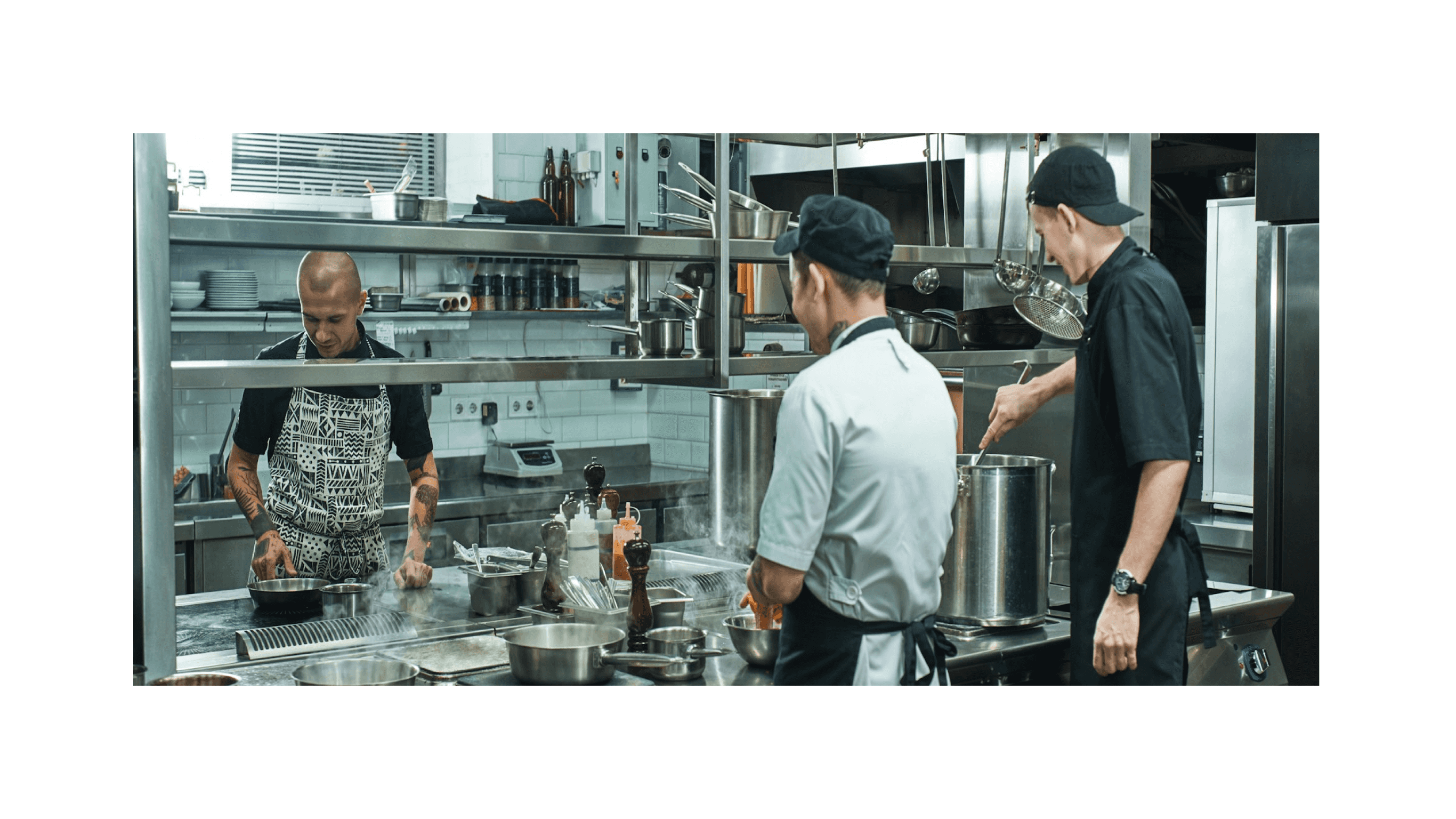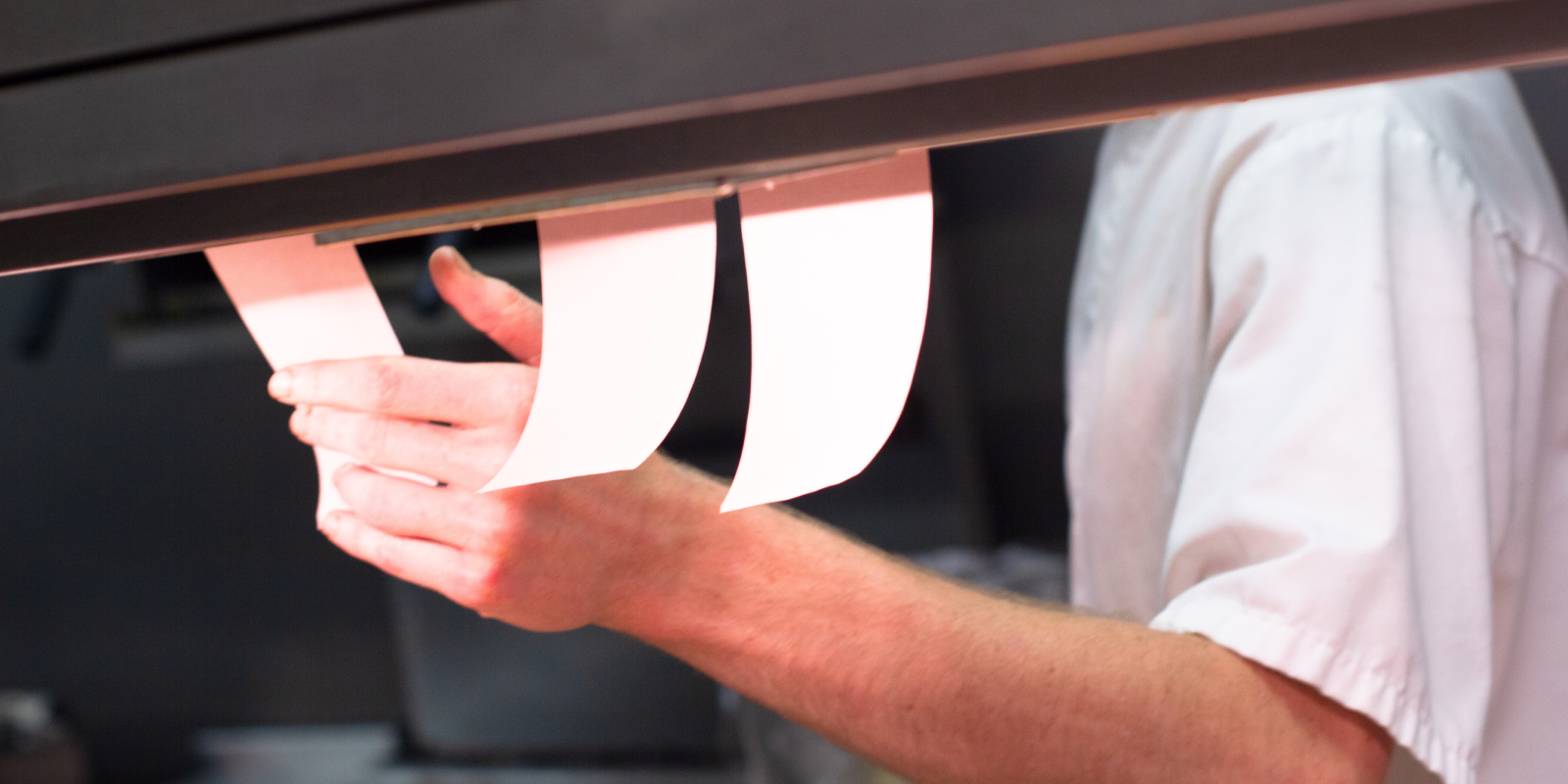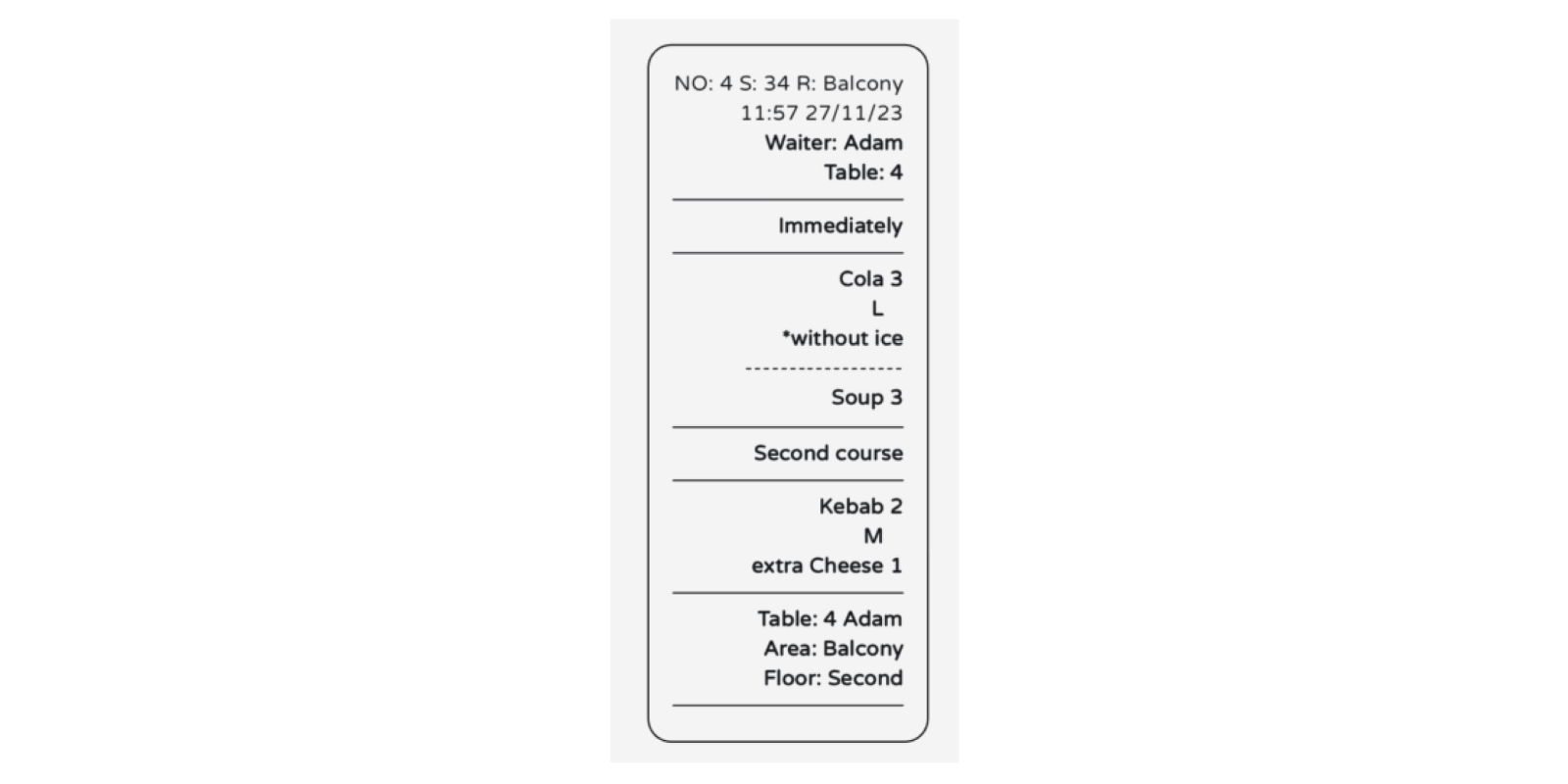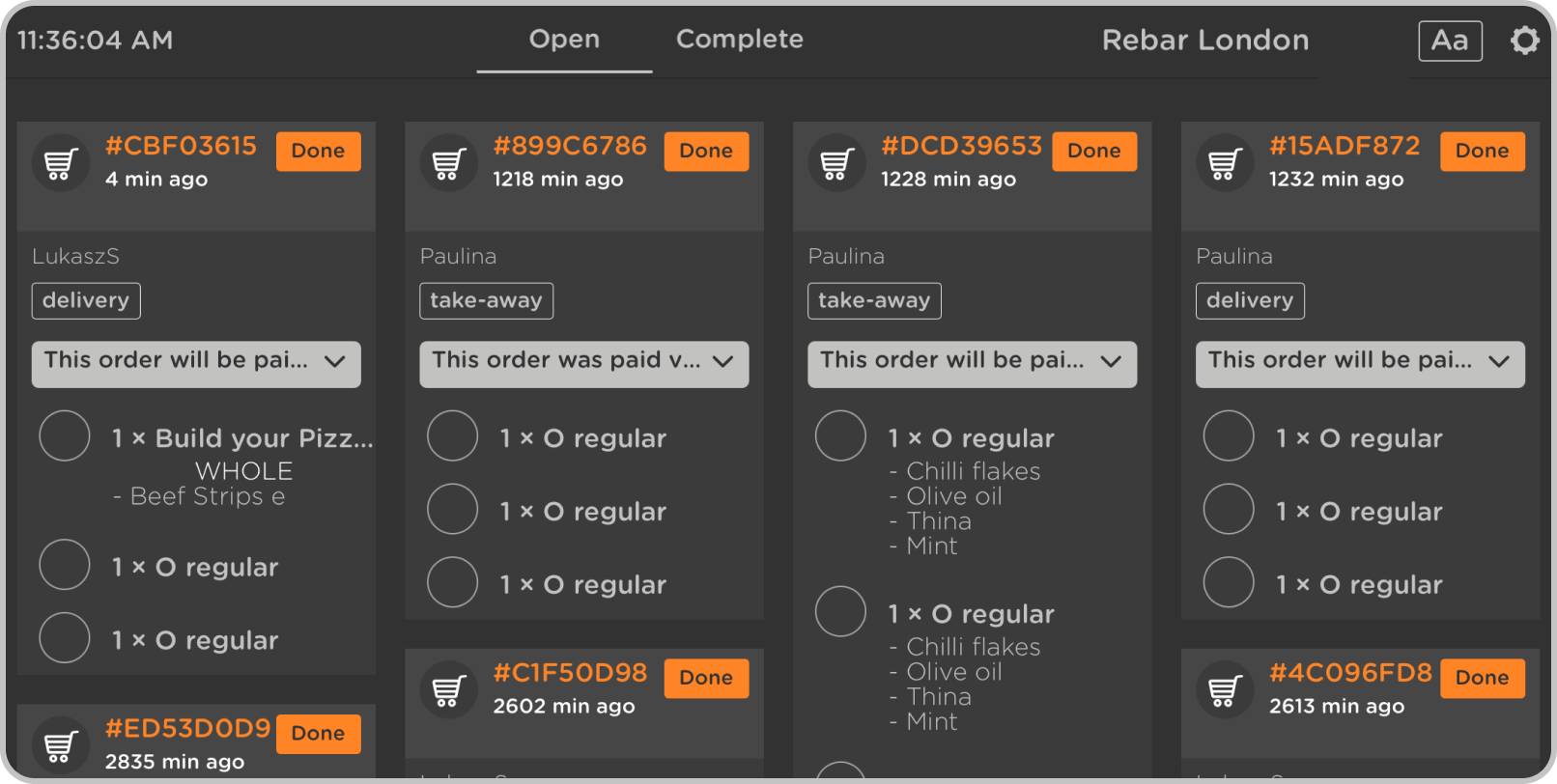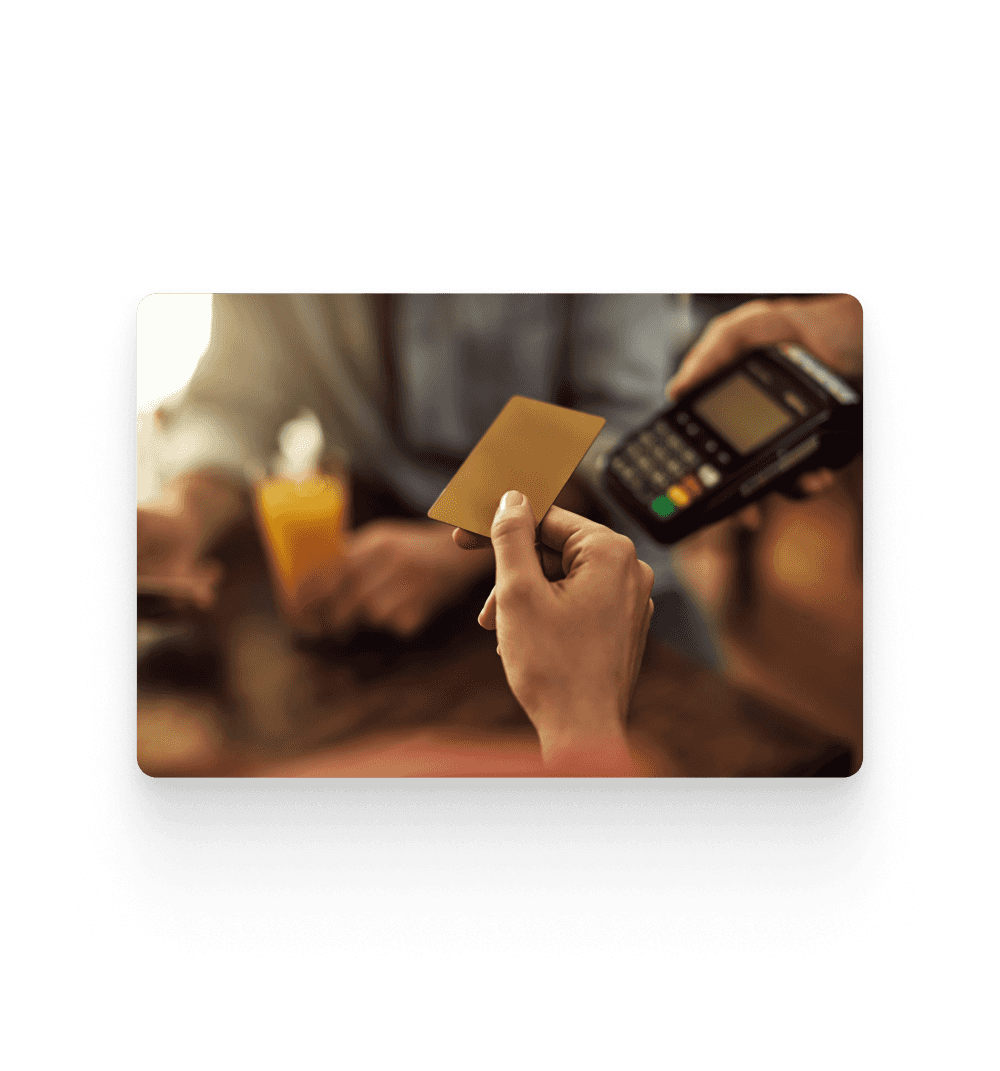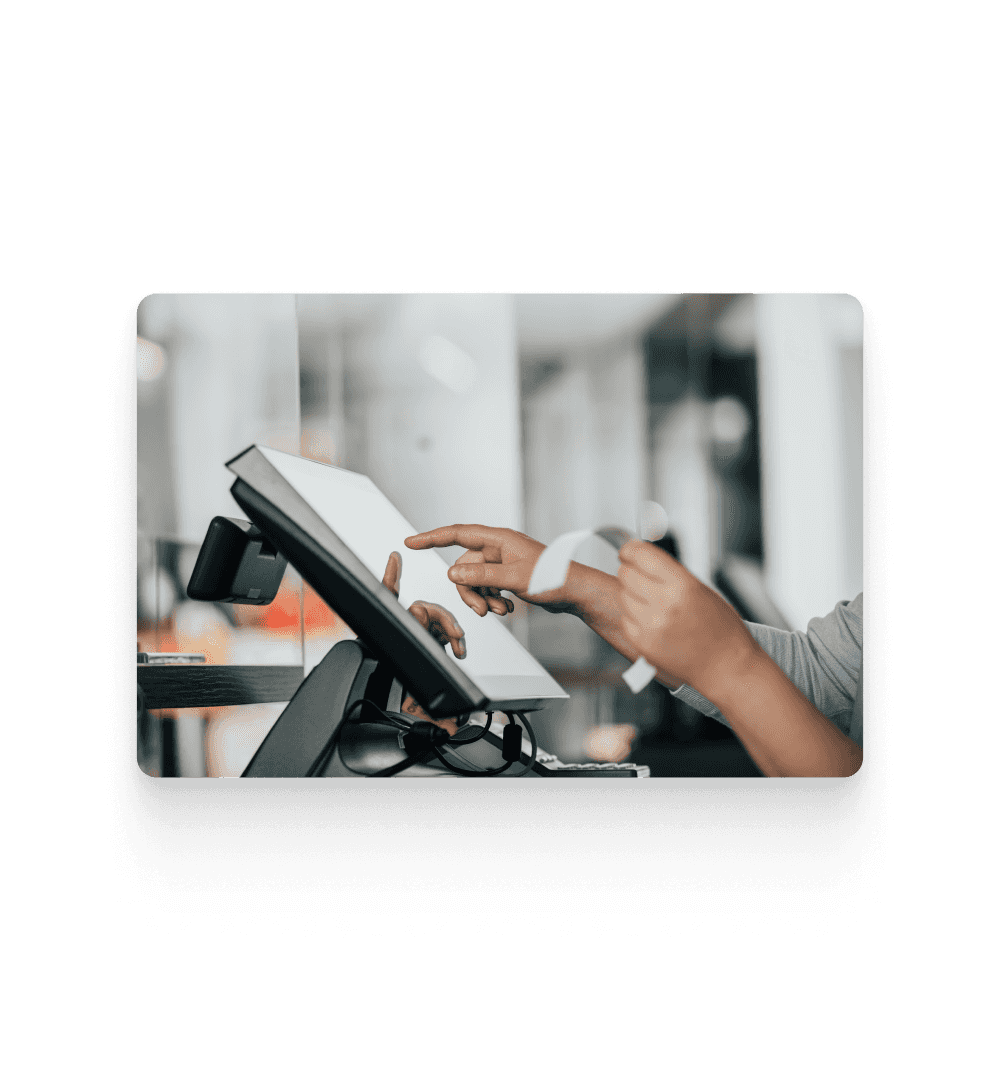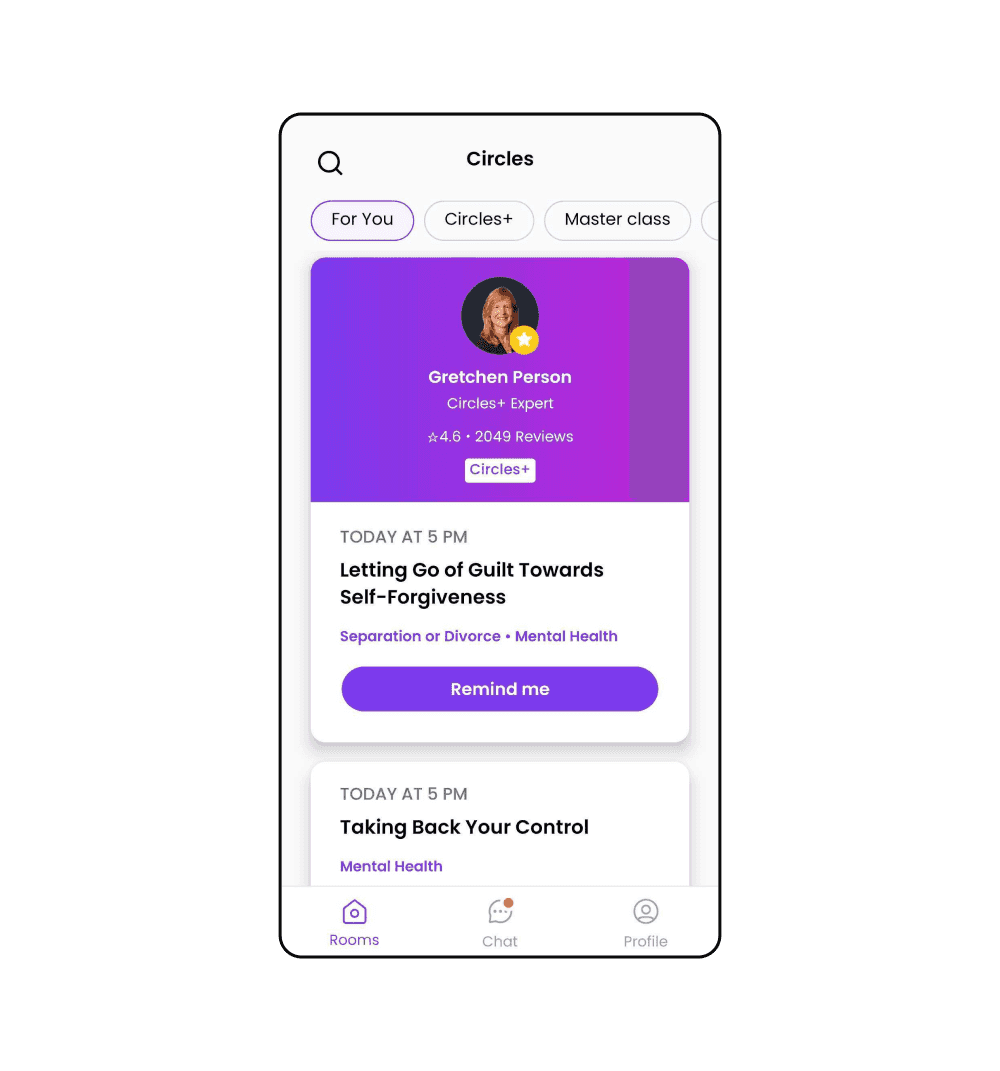technologies: Swift, Firebase, Crashlytics, Alamofire, Realm, MVVM
problem: ineffective kitchen receipt printing system
This story starts in the hot, crowded restaurant kitchen full of busy staff trying to handle too many printed food orders. This old-fashioned approach has been so deeply ingrained in the daily life of the staff that they haven’t thought of confronting the system, despite experiencing its limitations first-hand.
The high volume of printed receipts posed a challenge for the already busy kitchen staff, making it difficult to keep track of them. As a result, receipts often became mixed up, disrupting their proper order, and were prone to being lost or damaged, which made them difficult to read.
They also proved ineffective as a tool for exchanging information. For instance, kitchen personnel had no means of informing waitstaff about the progress of meal preparation. This system also failed to provide relevant data regarding meal preparation to delivery providers, which resulted in unrealistic delivery estimates.
An example of a printed receipt for a kitchen staff
Our product team uncovered these limitations, deciding to change printed receipts into a screen placed in the center of every restaurant kitchen. It was high time to put receipts into the past. Instead, a bespoke Kitchen Display System (KDS) has emerged.
the solution: digitalized kitchen receipts
The Kitchen Display System seamlessly presents all orders on an enormous kitchen screen. Additionally, kitchen staff can update order progress effortlessly keeping waitstaff in the loop.
KDS eliminates receipts loss, reduces paper use, and optimizes the collaborative efforts between the kitchen and waitstaff. Finally, both teams can dedicate their undivided attention to their core responsibilities: food preparation and customer service.
The new system also improves tracking of order preparation time, enhancing delivery estimates. This not only optimizes driver pickups but also improves customer satisfaction.
Boosting productivity? That's another perk of our revamped system. We included color-coded indicators to identify orders that take too long to process. The color-coding system is fully customizable, empowering restaurant staff to determine specific time thresholds associated with each color. For instance, the red color might indicate that a meal has not been prepared within 20 minutes after ordering.
challenge: instant communication across multiple applications
The last thing that the kitchen staff should worry about is the quality of the internet connection. Therefore, we implemented an offline mode, enabling crucial actions to be taken even offline.
To make the transition to KDS as smooth as possible we had to ensure instant communication across multiple environments, involving the POS application, backend, KDS, and waitstaff application. By implementing a constant synchronization the system displayed new orders on the kitchen screen in a matter of seconds.
The Right UI was also a crucial factor in convincing restaurant staff to transition from their old system. Our team collaborated closely with Practi's product designers to craft a simple, user-friendly UI that would appeal to even the most resistant end users.
the results: successful launch across Israel and the UK
After the successful launch of the Kitchen Display System, employees of numerous restaurants across Israel and the United Kingdom finally said goodbye to unloved receipts. KDS became a remedy to all pain points of the outdated kitchen thermal receipt system. That’s another weight lifted off the shoulders of restaurant workers during our 10-year collaboration with Practi. Let’s continue this journey. Destination: change!
